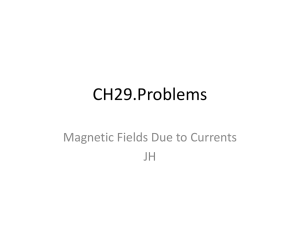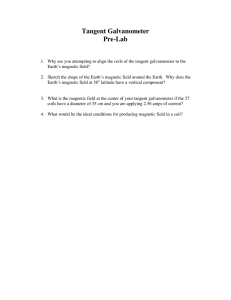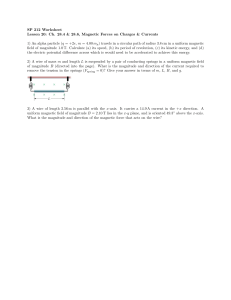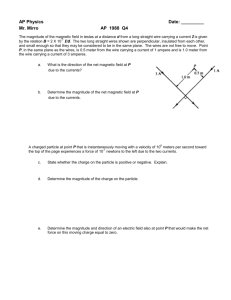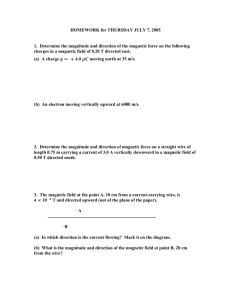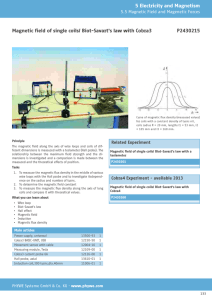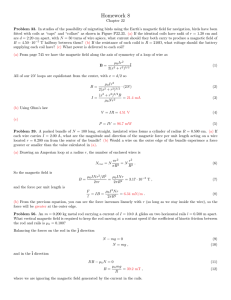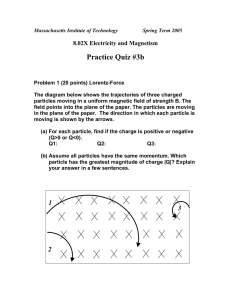22.33 Here we need to use the result of example... (a)According to the problem, both of the coils carry the...
advertisement
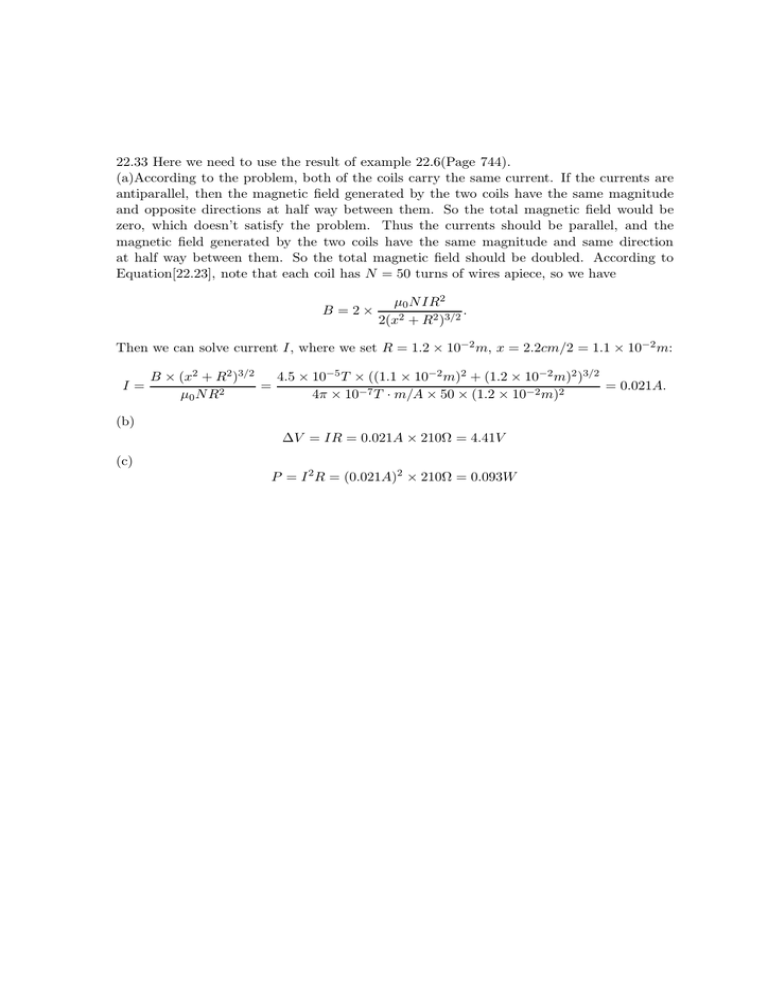
22.33 Here we need to use the result of example 22.6(Page 744). (a)According to the problem, both of the coils carry the same current. If the currents are antiparallel, then the magnetic field generated by the two coils have the same magnitude and opposite directions at half way between them. So the total magnetic field would be zero, which doesn’t satisfy the problem. Thus the currents should be parallel, and the magnetic field generated by the two coils have the same magnitude and same direction at half way between them. So the total magnetic field should be doubled. According to Equation[22.23], note that each coil has N = 50 turns of wires apiece, so we have B =2× µ0 N IR2 . 2(x2 + R2 )3/2 Then we can solve current I, where we set R = 1.2 × 10−2 m, x = 2.2cm/2 = 1.1 × 10−2 m: I= B × (x2 + R2 )3/2 4.5 × 10−5 T × ((1.1 × 10−2 m)2 + (1.2 × 10−2 m)2 )3/2 = = 0.021A. µ0 N R 2 4π × 10−7 T · m/A × 50 × (1.2 × 10−2 m)2 (b) ∆V = IR = 0.021A × 210Ω = 4.41V (c) P = I 2 R = (0.021A)2 × 210Ω = 0.093W
